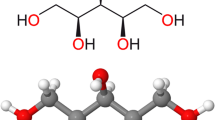Abstract
The purpose of this research was to develop and evaluate buccal mucoadhesive controlled release tablets of lercanidipine hydrochloride using polyethylene oxide and different viscosity grades of hydroxypropyl methylcellulose individually and in combination. Effect of polymer type, proportion and combination was studied on the drug release rate, release mechanism and mucoadhesive strength of the prepared formulations. Buccal mucoadhesive tablets were made by direct compression and were characterized for content uniformity, weight variation, friability, surface pH, thickness and mechanism of release. In order to estimate the relative enhancement in bioavailability one optimized formulation was evaluated in rabbits. Further, placebo tablets were also evaluated for acceptability in human subjects. Results indicated acceptable physical characteristics of designed tablets with good content uniformity and minimum weight variation. Drug release and mucoadhesive strength were found to depend upon polymer type, proportion and viscosity. The formulations prepared using poly ethylene oxide gave maximum mucoadhesion. The release mechanism of most formulations was found to be of anomalous non-Fickian type. In vivo studies of selected formulation in rabbits demonstrated significant enhancement in bioavailability of lercanidipine hydrochloride relative to orally administered drug. Moreover, in human acceptability studies of placebo formulations, the designed tablets adhered well to the buccal mucosa for more than 4 h without causing any discomfort. It may be concluded that the designed buccoadhesive controlled release tablets have the potential to overcome the disadvantage of poor and erratic oral bioavailability associated with the presently marketed formulations of lercanidipine hydrochloride.




Similar content being viewed by others
References
A. H. Shojaei. Buccal mucosa as a route for systemic drug delivery: a review. J. Pharm. Pharm. Sci. 1:15–30 (1998).
J. A. Nicolazzo, B. L. Reed, and B. C. Finnin. Buccal penetration enhancers-how do they really work? J. Control. Release. 105:1–15 (2005).
L. I. Giannola, V. DeCaro, G. Giandalia, et al. Transbuccal tablets of carbamazepine: formulation, release and absorption pattern. Int. J. Immunopathol. Pharmacol. 19:21–31 (2006).
L. Martin, C. G. Wilson, F. Koosha, and I. F. Uchegbu. Sustained buccal delivery of the hydrophobic drug denbufylline using physically cross-linked palmitoyl glycol chitosan hydrogels. Eur. J. Pharm. Biopharm 55:35–45 (2003).
S. Garg, and G. Kumar. Development and evaluation of a buccal bioadhesive system for smoking cessation therapy. Pharmazie 62:266–272 (2007).
T. F. Luscher, and F. Cosentino. The classification of calcium antagonists and their selection in the treatment of hypertension: a reappraisal. Drugs 55:509–517 (1998).
L. M. Bang, T. M. Chapman, and K. L. Goa. Lercanidipine a review of its efficacy in the management of hypertension. Drugs 63:2449–2472 (2003).
M. Barchielli, E. Dolfini, P. Farina, et al. Clinical pharmacokinetics of lercanidipine. J. Cardiovasc. Pharmacol. 29:S1- S15 (1997).
W. Abramowitz, B. P. Kapil, T. A. Riccobene, M. G. Dedhiya, Y. Yang, A. Chhettry, inventors, Forest Laboratories Inc., assignee. Lercanidipine modified release compositions. US Patent Application 20060165789. September 9, 2005.
A. Leonardi, F. Berlati, L. Pontello, inventors, Recordati Ireland Ltd., asignee. Lercanidipine capsules. US Patent Application 20060073200. October 4, 2005.
A. Abramowitz, R. P. Kapil, T. A. Riccobene, M. G. Dedhiya, S. K. Rastogi, A. Chhettry, inventors. Lercanidipine pH dependent pulsatile release compositions. US Patent Application 20060165788. September 9, 2005.
J. Faour, J. A. Vergez, inventors. Controlled release device containing lercanidipine. US Patent Application 20060177507. January 13, 2006.
P. Holm, T. Norling, inventors. Pharmaceutical compositions comprising lercanidipine. US Patent Application 20070105912. September 19, 2006.
P. Bottenberg, R. Cleymaet, C. D. Muynck, et al. Development and testing of bio-adhesive fluoride-containing slow release tablets for oral use. J.Pharm.Pharmacol. 43:457–464 (1991).
S. Azarmi, W. Roa, and R. Lobenberg. Current perspectives in dissolution testing of conventional and novel dosage forms. Int. J. Pharm 328:12–21 (2007).
P. L. Ritger, and N. A. Peppas. A simple equation for the description of solute release II. Fickian and anomalous release from swellable devices. J. Control. Release 5:37–42 (1987).
S. Jamzad, L. Tutunji, and R. Fassihi. Analysis of macromolecular changes and drug release from hydrophilic matrix systems. Int. J. of Pharm 292:75–85 (2005).
K. G. H. Desai, and T. M. P. Kumar. Preparation and evaluation of a novel buccal adhesive system. AAPS PharmSciTech. 5(3):e35 (2004).
R. K. Verma, and S. Garg. Compatibility studies between isosorbide mononitrate and selected excipients used in the development of extended release formulations. J. Pharm. Biomed. Anal 35:449–458 (2004).
N. A. Peppas, and P.A. Buri. Surface, interfacial and molecular aspects of polymer bioadhesion on soft tissues. J. Control. Release 2:257–275 (1985).
H. Kim, and R. Fassihi. Application of binary polymer system in drug release rate modulation. 2. Influence of formulation variables and hydrodynamic conditions on release kinetics. J. Pharm. Sci 86:323–328 (1997).
Acknowledgements
The authors are grateful to the University Grants Commission (UGC), New Delhi, India, for their financial support. The authors are thankful to Glenmark Pharmaceuticals Limited, Mumbai, India, for providing lercanidipine hydrochloride as a gift sample. The authors are grateful to Scientific and Digital Systems, New Delhi, for permitting to access their facility of texture analyzer.
Author information
Authors and Affiliations
Corresponding author
Rights and permissions
About this article
Cite this article
Charde, S., Mudgal, M., Kumar, L. et al. Development and Evaluation of Buccoadhesive Controlled Release Tablets of Lercanidipine. AAPS PharmSciTech 9, 182–190 (2008). https://doi.org/10.1208/s12249-007-9031-7
Received:
Accepted:
Published:
Issue Date:
DOI: https://doi.org/10.1208/s12249-007-9031-7




